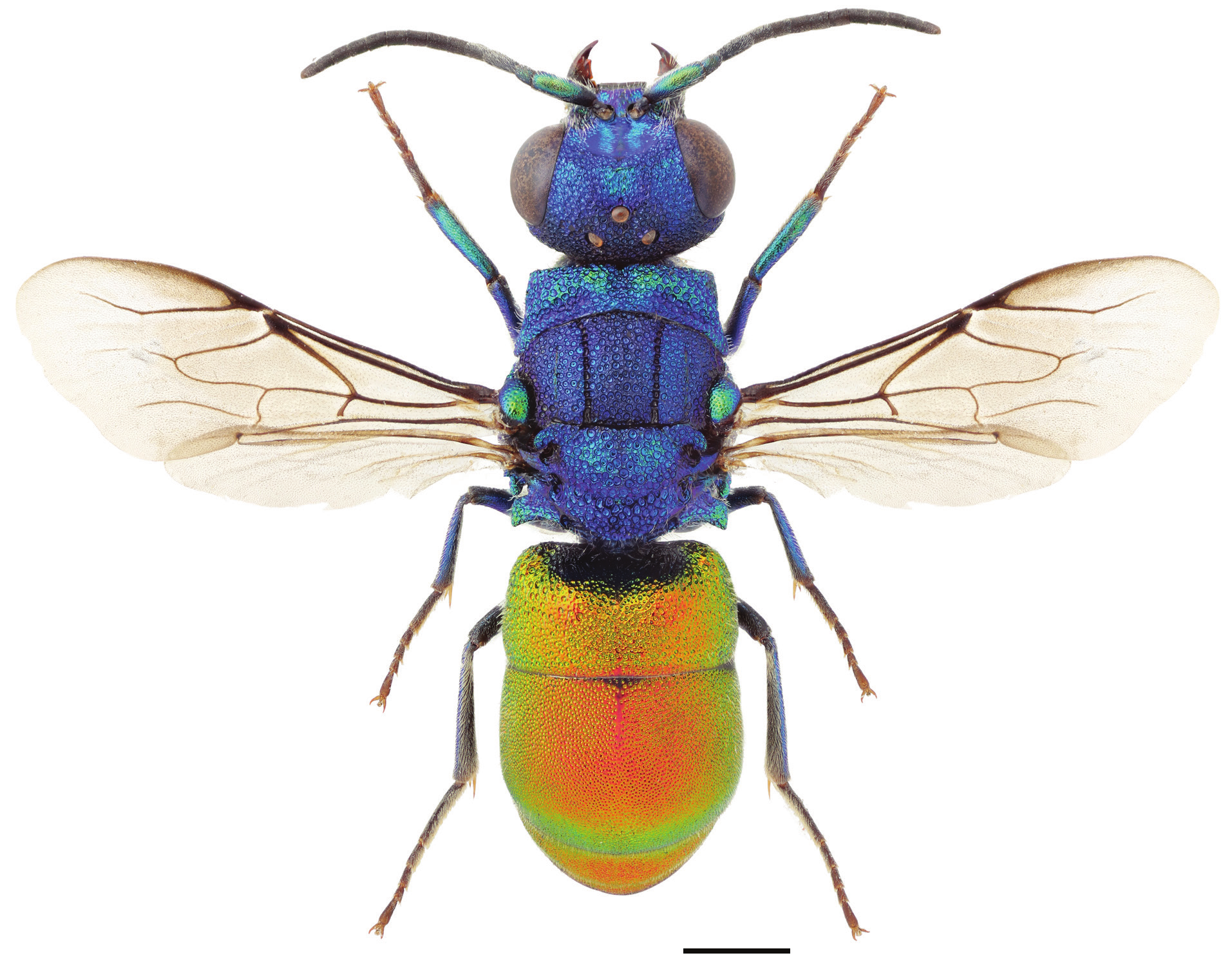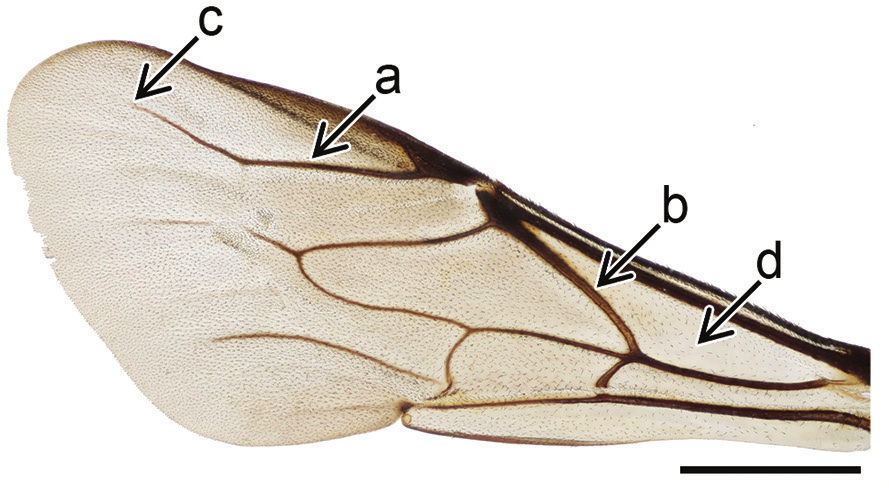Pseudochrysis neglecta
Figure 75
Pseudospinolia neglecta ♀. Scale 1 mm.
A relatively rare species found in sandy areas in the southern parts of Fennoscandia. The hosts are Eumeninae of the genus Odynerus. Pseudospinolia neglecta may be confused with Chrysura, but the radial sector vein of the forewing does not reach the wing margin.
- Innhold
- Diagnosis
- Distribution
- Biology
Diagnosis
Figure 9
Forewing: Pseudospinolia neglecta, a and c radial sector vein, b medial vein, d medial cell. Scale 1 mm.
Length 5–9 mm.
Both sexes are bicoloured with a green or blue head and mesosoma, and a golden red metasoma (Fig. 75). The vertex and the anterior margin of the pronotum often have golden reflections. The metasoma is very finely and densely punctured on the tergites, causing the surface to appear dull (Fig. 75). The posterior margin of T3 is edentate. The species can be confused with similarly coloured species of Chrysura, but the radial sector vein of the forewing does not reach the wing margin (Fig. 9).
Distribution
Denmark, Estonia, Finland, Latvia, Lithuania, Norway, Sweden. Relatively rare.
Trans-Palearctic/Holarctic? Europe, Asia, Russian Far East, China, USA, Canada (Kimsey and Bohart 1991, Kurzenko and Lelej 2007, Rosa et al. 2014). Possibly accidentally introduced to North America (Bohart and Kimsey 1982).
Be aware that the records present in the GBIF map may be misleading for some countries due to unrevised data sets or missing information.
GBIF Taxon: Pseudospinolia neglecta (Shuckard, 1836)Biology
Habitat: sparsely vegetated areas with clay or sandy soil, gardens with clay structures, such as barn walls. Adults occasionally visit flowers of Asteraceae, Crassulaceae and Rosaceae (Kusdas 1956, Heinrich 1964, Ressl 1966, Linsenmaier 1997, Rosa 2004, 2006).
Flight period: late May to mid-August.
Host: Odynerus spinipes (Linnaeus) and O. reniformis (Gmelin) (Vespidae) (Smith 1862, Adlerz 1910, Trautmann 1927, Linsenmaier 1959, Banaszak 1980, Morgan 1984), possibly also Ancistrocerus parietum (Linnaeus) and Gymnomerus laevipes (Shuckard) (Dahlbom 1854, Berland and Bernard 1938). Host records mentioning bees of the genera Osmia Panzer and Heriades Spinola (Megachilidae) are doubtful, as noted by Kunz (1994).

